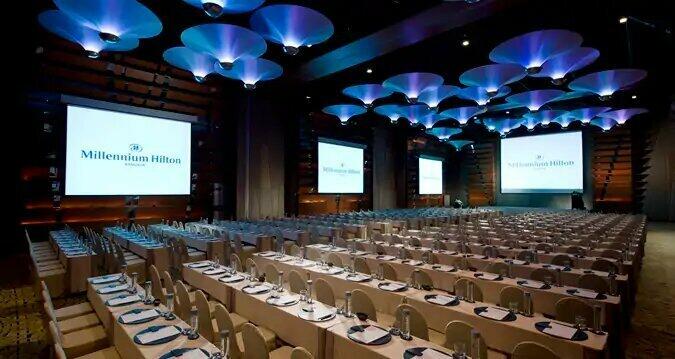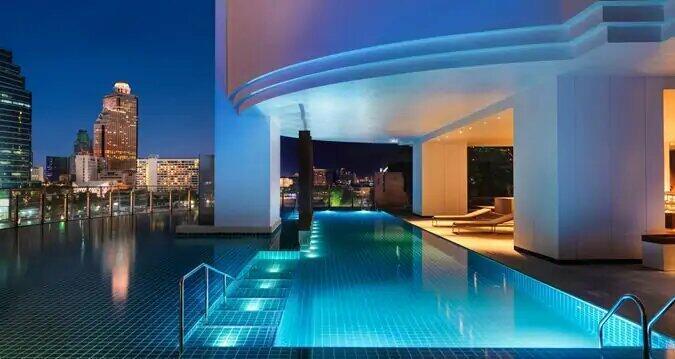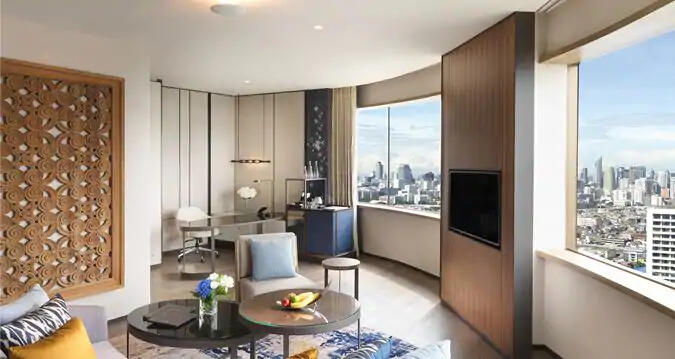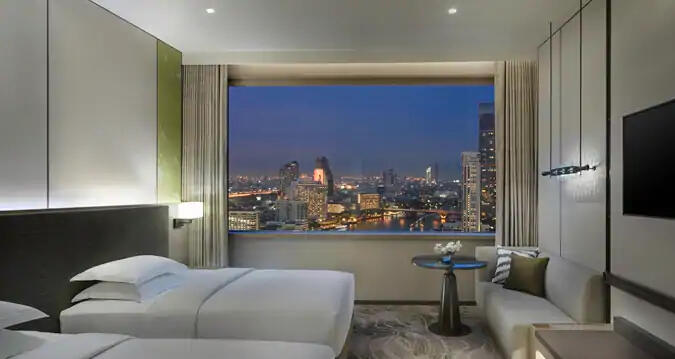Introduction
The hospitality industry is important, especially in a modern world where every individual has an expectation of having his or her needs satisfied as soon as possible at a reasonable price. To date, I have had personal experience with several different service providers. In this paper, I provide an analysis of a visit to the Millennium Hilton Bangkok hotel (“Millennium Hilton Bangkok.” n.d.) (Appendix A). The analysis includes a review of the new 3 Ps of service marketing and a description of my responses as a customer of the hotel’s services.
Processes
Description of Processes
The overall customer experience of staying at the Millennium Hilton Bangkok was positive. Both front- and back-stage activities were carried out by personnel in an excellent manner. No excessive waits or fail points were a part of the experience. A clear line of visibility was established, and service standards corresponded to my expectations. I based my assessment of the hotel’s service quality on physical evidence that was available to me as a client (Appendix B).
Customer Participation, Customers as Co-Creators, and Self-Service Technologies (SSTs)
The Millennium Hilton Bangkok views its visitors as co-creators of services, meaning that clients play an important role in service delivery. Customer participation is a concept involving visitor resources and actions that have an impact on the hotel’s functioning (Wirtz & Lovelock, 2018). Clients’ contributions may be made at a physical, mental, or emotional level. My experience at the Millennium Hilton Bangkok was overall positive, and I can conclude that I took no negative actions aimed at disrupting the processes taking place in the facility. I responded well to questions and requests from hotel personnel and did everything possible to ensure pleasant communication and collaboration.
The hospitality industry has not ignored the rapid development of technology. It has become common practice for hotels to offer such SSTs as self-check-in and self-check-out, electronic service guides, and other conveniences (Kaushik, Agrawal, & Rahman, 2015). At the Millennium Hilton Bangkok, the option of self-check-in is available, and I used that SST to book a room and was satisfied with the level of automatism that the hotel offered. I found it convenient that I did not have to make a long-distance call or write an email but was able to book a room within a few minutes.
Demand vs. Capacity
The demand-capacity relationship plays a crucial role in the hospitality industry. When demand exceeds capacity, the facility must deny service to some of its clients, leading to negative outcomes for the business (Wirtz & Lovelock, 2018). When demand exceeds optimum capacity, the company does not refuse to accommodate anyone, but conditions become uncomfortable as the facility is crowded and services deteriorate. Finally, in the case when demand and supply are substantially balanced at an optimum capacity level (Wirtz & Lovelock, 2018), the facility is at its usual level of business, employees are not required to perform additional tasks, and customers are satisfied. The last example of demand-capacity correlation is the most advantageous, and it composes one of the criteria of customer satisfaction (Madanoglu & Ozdemir, 2016). From my stay at the Millennium Hilton Bangkok, I can conclude that the hotel has an optimal demand-capacity correlation. It was obvious that although the place was popular, it was not overcrowded. Hotel personnel made every effort to pay due attention to every client’s needs.
Physical Environment
In the hotel industry, the major purpose of arranging the physical environment is to provide customers with a pleasant place to stay. With help in the form of designing the right “servicescape,” it becomes possible to reach the highest level of customer satisfaction (Wirtz & Lovelock, 2018, p. 300). Other goals of the service environment include demonstrating quality, enhancing productivity, and strengthening the brand. The main dimensions of the physical environment include pleasant conditions, a functional layout, symbols and signs, and employees’ appearance (Wirtz & Lovelock, 2018). At the Millennium Hilton Bangkok, all aspects incorporated into the physical environment are developed at the highest level. The hotel’s halls, corridors, and rooms are light and spacious as well as uncluttered. The main material used for the hotel is glass, giving a constant feeling of transparency and airiness. Furniture is comfortable and functional and, most importantly, modern. Fresh flowers adorn the halls and rooms, making the atmosphere particularly fresh and pleasant. Employees are neat and always wear clean and pressed uniforms. As an added positive component, other customers are polite, cheerful, and always willing to communicate.
According to Russell’s model of affect, two key emotional dimensions pertain to the physical environment: pleasure and arousal (Wirtz & Lovelock, 2018). Pleasure is a straightforward and subjective reaction to the environment that is determined by the client’s impressions. On a personal note, I was pleased with the hotel’s environment since it was neat and spacious and exuded a charming atmosphere. Arousal is associated with the stimulation of a person’s feelings. This dimension can vary between very low and very high levels of activity (Wirtz & Lovelock, 2018). The Millennium Hilton Bangkok stimulated a high level of arousal due to its numerous features and facilities for customers’ comfort.
Finally, the holistic effect of the physical environment at the Millennium Hilton Bangkok was positive. Everyone and everything seemed to be in their proper places at all times. Employees working on different teams were all equally good-natured and helpful. Starting with the receptionist and ending with the laundry worker, everyone welcomed visitors and made sure that each received the best quality of service. I had an opportunity to communicate with different groups of employees (waiters, cleaning staff, receptionists, and others). From these interactions, I can draw the conclusion that every employee at the hotel has been well-trained, and their skills are monitored and evaluated on a regular basis. Any remarks by a senior manager are expressed in a tone of supportive guidance rather than sounding accusing. I am sure that the physical environment of the hotel makes people want to return there repeatedly. In addition, the location is superb, giving visitors an exceptional opportunity to see the whole city of Bangkok. Generally, the hotel’s servicescape produces a positive effect both on employees and clients, which is definitely a benefit for the business.
People
The Millennium Hilton Bangkok highly values not only its clients but also its employees. Every person on the team is considered to be part of a large family. However, while the hotel cherishes its employees, it also has established numerous requirements for them to ensure that the hotel hires the most talented and suitable personnel. Every hotel position has its own specific roles (“Assistant spa manager,” 2019; “Director of food and beverage,” 2019; “Executive floor officer,” 2019). Common to all types of work is that employees should strive for the highest level of customer satisfaction and comply with legal and healthcare regulations. While it is possible to say that there is a high level of stress in the hotel, this is only true for new employees or those who do not know how to cope with some functions. Otherwise, the work is not stressful because all employees know exactly what their work obligations are. Managers are always ready to help in case a staff member is in trouble.
The Service Talent Cycle
The service talent cycle in the hotel follows a three-element framework that includes hiring, enabling, and motivating processes. In order to hire the right people, a facility in the hospitality industry must be the preferred employer in its sector (Wirtz & Lovelock, 2018). The Hilton Hotels and Resorts company is the global leader in hospitality (“Director of food and beverage,” 2019). Therefore, many individuals are willing, even eager to work for this corporation’s hotels. When hiring new people, the Millennium Hilton Bangkok is interested in upbeat personalities, preferably having previous experience in the selected area of service. However, the hotel is always opened to novices that are eager to learn and develop their professional abilities. For some specialties, previous experience in the area is required (“Assistant spa manager,” 2019). Other professional roles presuppose excellent communication skills, and for some positions, an applicant might be expected to speak several languages (“Executive floor officer,” 2019). This hiring process enables HR specialists to select the most talented people from a large number of applicants.
Enabling processes include empowerment and training of team members (Wirtz & Lovelock, 2018). Individuals employed at the Millennium Hilton Bangkok are continuously trained on organizational culture and vision. Every employee understands his or her place and follows the directions predetermined by the contract with a focus on excellence. At the same time, all workers know basic safety measures and can provide assistance to the people staying at the hotel in case of emergency. Finally, the crucial aspect of integration across departments is taken into consideration (Wirtz & Lovelock, 2018). Whereas all individuals are aware of their duties, they are also acquainted with the tasks that other teams perform. The motivational aspect of the service talent cycle is highly developed at the hotel as well. A system of incentives is in place to promote those workers who demonstrate excellent performance.
The Cycles of Failure, Mediocrity, or Success (Characteristics)
The cycle of failure presupposes hiring people who are not appropriate for the position or someone who might quickly become bored due to the repetitiveness of the operations they must perform (Wirtz & Lovelock, 2018). At the Millennium Hilton Bangkok, established procedures minimize the possibility of such a scenario. Individuals who are hired perform their duties diligently because their employer treats them with respect and ignites their interest in the profession. The cycle of mediocrity is another negative phenomenon related to the hiring process. This cycle is largely concerned with a monopolistic business characterized by little competitiveness (Wirtz & Lovelock, 2018). The Millennium Hilton Bangkok does not follow this cycle as it belongs to one of the most popular hotel chains in the world, and its employees must be agile. Instead, the hotel chooses to determine its long-term goals through the cycle of success, which involves investing in employees with the aim of reaching further success and profit (Wirtz & Lovelock, 2018). By way of continuous training and education, the Millennium Hilton Bangkok motivates its workers, leading to increased levels of customer satisfaction.
Responses
Customers of the hospitality industry services may be analyzed from the perspectives of effect, cognition, and behavior. The effect is an element related to feelings, meaning that customers reveal this response through expressing their emotions toward the services they have received or about their expectations that have not been met. Cognition is concerned with logical thinking, and it represents the clients’ objective reaction to services. Behavior is associated with personal interactions, incorporating the level of communication with the hotel’s personnel. From my experience with the Millennium Hilton Bangkok, I can conclude that a direct cause-and-effect relationship exists between the staff’s actions and visitor satisfaction. My cognitive, affective, and behavioral responses to the services that the facility offered were highly positive.
Service Quality
Service quality (SQ) at the Millennium Hilton Bangkok will be analyzed from the perspective of SQ dimensions and the Gaps model. SQ involves such elements as tangibles, reliability, responsiveness, assurance, and empathy (Wirtz & Lovelock, 2018). At the Millennium Hilton Bangkok, all these dimensions are at the highest level. I was particularly touched by employees’ empathy: for example, the manager was always ready to listen to me when I had a question or a complaint. I would also like to emphasize the level of assurance at the hotel. I felt safe leaving my suitcases in the lobby, and I could always rely on the staff’s competence.
Wirtz (2017) identifies six possible gaps in service delivery: knowledge, policy, delivery, communications, perceptions, and service quality. The knowledge gap involves the hotel management’s insufficient awareness of customer needs and expectations. The policy gap reflects inconsistency between service standards and client expectations (Wirtz, 2017). The delivery gap is concerned with inappropriate service delivery by the service provider. The communications gap may have both an internal and external dimension. The first is the difference between the staff’s opinion of what they are offering and the actual service. The external communications gap is the so-called over-promise that occurs when employees are evaluated in light of the sales they make (Wirtz, 2017). The perceptions gap appears when clients cannot make an adequate judgment about the services they have received. Finally, the service quality gap is the difference between the anticipated service and the delivered one (Wirtz, 2017).
Given the Gaps model, I can say that I have hardly perceived any gaps at the Millennium Hilton Bangkok. The only occasion was a misunderstanding with the receptionist on the first day of my stay, which can be identified as a communications gap. I asked the receptionist to schedule a wake-up call for the next morning, but she forgot to pass the request to the next shift. As a result, I missed an important Skype meeting. However, the manager apologized for the situation, and no similar instance was repeated.
Conclusion
Analysis of personal experience with the service provider Millennium Hilton Bangkok allows the conclusion that the facility in question has developed a highly positive level of services. Both clients and employees are satisfied with the organization of the operation at the hotel. Approaches to talent management involve seeking individuals who are willing to dedicate their efforts to satisfy their visitors’ needs. My responses to the services provided were highly positive at the affective, cognitive, and behavioral levels.
References
Assistant spa manager. (2019). Web.
Director of food and beverage. (2019). Web.
Executive floor officer. (2019). Web.
Kaushik, A. K., Agrawal, A. K., & Rahman, Z. (2015). Tourist behaviour towards self-service hotel technology adoption: Trust and subjective norm as key antecedents. Tourism Management Perspectives, 16, 278-289.
Madanoglu, M., & Ozdemir, O. (2016). Is more better? The relationship between meeting space capacity and hotel operating performance. Tourism Management, 52, 74-81.
Millennium Hilton Bangkok. (n.d.). Web.
Wirtz, J., & Lovelock, C. (2018). Essentials of services marketing (3rd ed.). Harlow, England.
Wirtz, J. (2017). Winning in service markets: Success through people, technology and strategy. Hackensack, NJ: World Scientific.
Appendix A
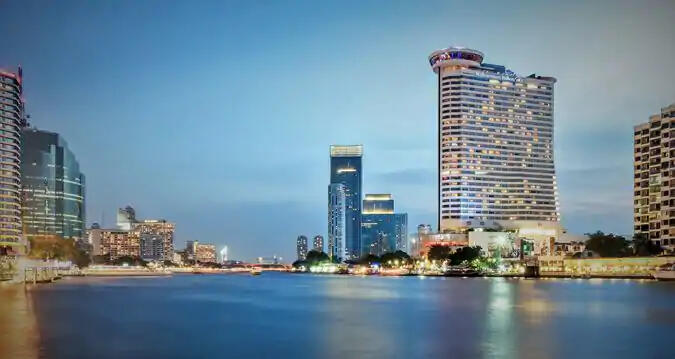
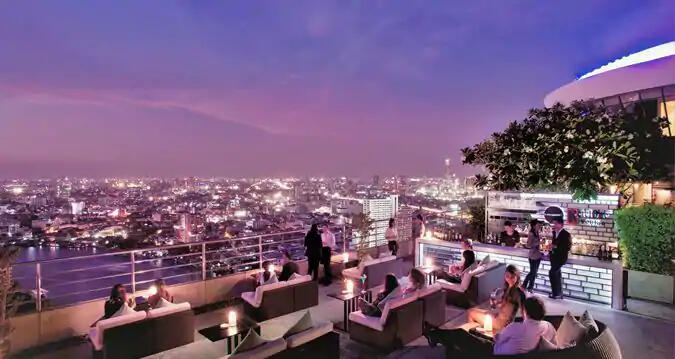
The Millennium Hilton Bangkok.
